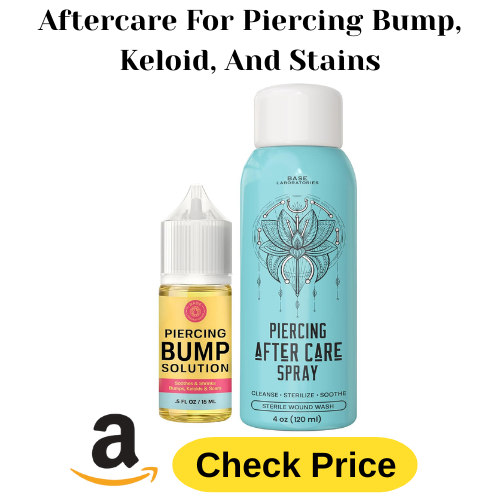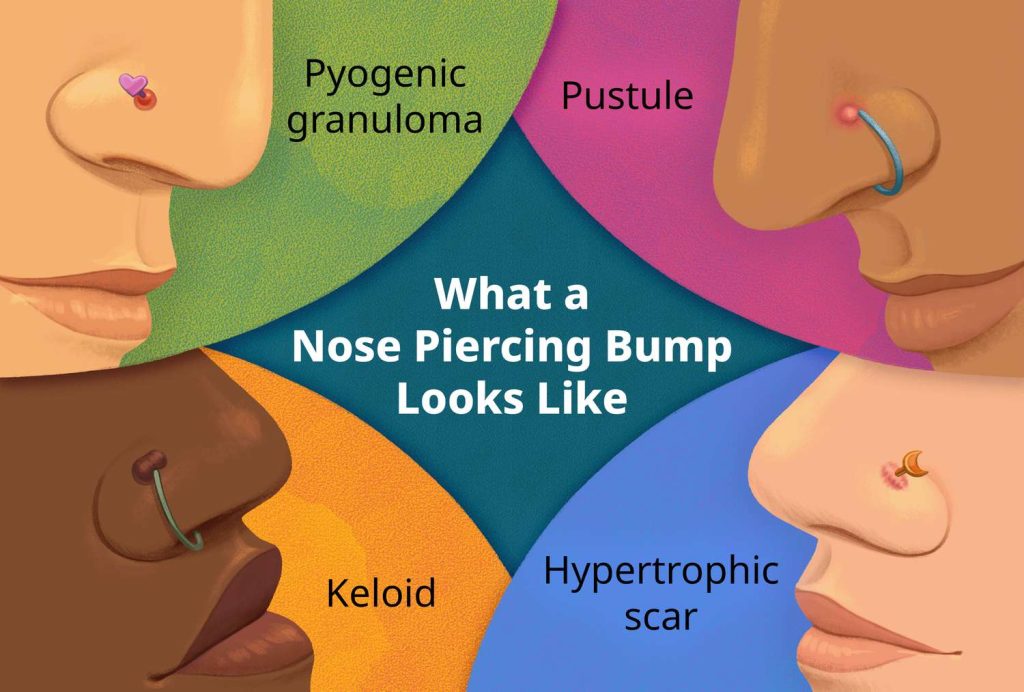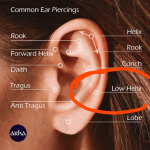Piercing bumps can be annoying and sometimes painful. They often appear after getting a new piercing. Many people want to know how to get rid of them. In this article, we will explore various types of piercing bumps. We will also share easy ways to treat them.
What is a Piercing Bump?
A piercing bump is a small raised area around a piercing. It can happen on any type of piercing. Common locations include ears, noses, and cartilage. Bumps can be red, swollen, or itchy. They can also be painful. Knowing what causes these bumps is important for treatment.

Credit: www.medicalnewstoday.com

Credit: www.reddit.com
Types of Piercing Bumps
There are different types of bumps that can form. Here are some common types:
- Keloid: A keloid is a thick, raised scar. It can grow larger than the original piercing.
- Granuloma: This is a small, red bump. It often appears on the earlobe or nostril.
- Infection: An infected piercing can cause redness and pain. It may also produce pus.
- Cartilage bump: This bump forms on cartilage piercings, like the ear or nose.
Why Do Piercing Bumps Happen?
Piercing bumps can happen for several reasons:
- Infection: Bacteria can enter through the piercing.
- Allergies: Some people are allergic to certain metals.
- Trauma: Bumping or hitting the piercing can cause irritation.
- Improper care: Not cleaning the piercing can lead to bumps.
How to Get Rid of Piercing Bumps
Now, let’s talk about how to get rid of these bumps. Here are some simple and effective methods:
1. Clean The Piercing Regularly
Keeping your piercing clean is very important. Use saline solution or a mild soap. Clean the area twice a day. This helps prevent infection. Use a clean cotton ball or swab.
2. Avoid Touching The Piercing
Try not to touch your piercing. Touching can introduce dirt and bacteria. Avoid playing with the jewelry. This can cause irritation and bumps.
3. Use A Warm Compress
A warm compress can help reduce swelling. Soak a clean cloth in warm water. Place it gently on the bump for about 10 minutes. Do this twice a day.
4. Apply Tea Tree Oil
Tea tree oil is known for its healing properties. Dilute it with a carrier oil. Use a cotton swab to apply it to the bump. Do this once a day.
5. Use Hydrocortisone Cream
Hydrocortisone cream can reduce inflammation. Apply a small amount to the bump. Use this cream sparingly. Overuse can thin the skin.
6. Avoid Changing Jewelry Too Soon
Changing jewelry too soon can irritate the piercing. Wait at least six weeks after getting a new piercing. If you need to change it, ensure it is healed first.
7. Consult A Professional
If the bump does not go away, consult a professional. A piercer or doctor can provide advice. They may recommend treatment options.
What to Do for Specific Bumps
Some bumps need special care. Here are tips for specific cases:
Keloid On Piercing
If you have a keloid, it can be tricky. Keloids are raised scars that form after injury. They can be hard to treat. A doctor may suggest:
- Injections to reduce size.
- Freezing the keloid.
- Laser treatment for flattening.
Granuloma On Piercing
Granulomas can form after irritation. They often appear red and swollen. To treat them:
- Keep the area clean.
- Apply a warm compress.
- Use over-the-counter anti-inflammatory cream.
Infected Ear Lobe Piercing Bump
An infected ear lobe can be serious. Signs include redness, swelling, and pus. To treat an infection:
- Clean the area with saline solution.
- Apply an antibiotic ointment.
- If it worsens, see a doctor.
Nostril Piercing Bump
Nostril bumps can be caused by various factors. This may include irritation or infection. To help:
- Clean the area regularly.
- Use a saline solution.
- Consider switching to a hypoallergenic jewelry.
When to See a Doctor
Sometimes bumps can get worse. If you notice these signs, see a doctor:
- Severe pain or swelling.
- Fever or chills.
- Red streaks spreading from the piercing.
- Pus that has a bad smell.
Preventing Piercing Bumps
Prevention is always better than treatment. Here are some tips to avoid bumps:
- Choose a professional piercer.
- Use high-quality jewelry.
- Follow aftercare instructions.
- Keep the area clean and dry.
Frequently Asked Questions
What Causes A Piercing Bump?
Piercing bumps can be caused by irritation, infection, or allergic reactions. They may also develop from improper aftercare.
How Do I Know If My Piercing Bump Is Infected?
Signs of infection include redness, swelling, heat, and pus. If you notice these, consult a professional.
Can I Pop A Bump On My Piercing?
Popping a bump is not recommended. It can lead to infection and further complications.
What Is A Keloid From A Piercing?
A keloid is a thick, raised scar that forms at the piercing site. They can be challenging to treat.
Conclusion
Piercing bumps can be bothersome. But with the right care, you can reduce them. Remember to clean your piercings regularly. Avoid touching them and use warm compresses. If bumps persist, consult a professional for help. Taking care of your piercings is key to a smooth healing process. Enjoy your beautiful piercings without the worry of bumps!




